The Well-Tempered Ear
20 women composers talk about classical music
2 Comments
PLEASE HELP THE EAR. IF YOU LIKE A CERTAIN BLOG POST, SPREAD THE WORD. FORWARD A LINK TO IT OR, SHARE IT or TAG IT (not just “Like” it) ON FACEBOOK. Performers can use the extra exposure to draw potential audience members to an event. And you might even attract new readers and subscribers to the blog.
By Jacob Stockinger
What do women composers think about themselves, their careers and the place they occupy in the world of classical music?
Here are quotes — with YouTube videos, great vintage still photographs and musical excerpts — by 20 women composers throughout history from Hildegard von Bingen in the Middle Ages to contemporary living composers such as Americans Joan Tower, Missy Mazzoli, Jennifer Higdon and Jessie Montgomery.
That many of the names will seem familiar to many readers is a sign of how the “canon” has expanded in recent years and brought a new appreciation of neglected women composers, many of whom have been completely overlooked but are now featured prominently on concert programs and radio shows.
Mind you, insightful observations and great quotes about sexism, racism, ambition, creativity and history don’t guarantee music of superior quality.
But their music has to be played and listened to before it can be judged.
The Ear found this collection well worth paying attention to by men as well as women, especially young ones pursuing a career in music. Everyone can use a little inspiration and encouragement.
Here is a link to the website based in Hong Kong, China that has the story:
What about Louise Ferrenc or Florence Price?
Barbara Strozzi and Asian women?
Are there other names you would include?
What do you think of the collage of quotes, music and videos?
The Ear wants to hear.
Tags: #BlogPost, #BlogPosting, #FacebookPost, #FacebookPosting, #YouTubevideo, Africa-American, America, American, Amy Beach, appreciation, Arts, Asia, asian, audience, Barbara Strozzi, Baroque, Beethoven, Bettina von Arnim, Black composers, Brazil, Brazilian, British, Canon, careers, Cecile Chaminade, Cello, Chamber music, China, Chinese, choral music, Clara Schumann, Clara Wieck Schumann, Classical music, collage, composer, Concert, concert program, concerto, contemporary, Early music, encouragement, English, equal rights, Ethel Smyth, excerpts, Facebook, familiar, Fanny Mendelssohn, Fanny Mendelssohn Hensel, feminism, feminist, Florence Price, forgotten, France, French, Germaine Tailleferre, German, Germany, Grazyna Bacewicz, Great Britain, guarantee, Hildegard von Bingen, History, Hong Kong, insight, inspiration, Italian, Italy, Jacob Stockinger, Japan, Japanese, Jennifer Higdon, Jessie Montgomery, Joan Tower, judge, Julia Perry, Kassia, Korea, Korean, link, living, Louise Ferrenc, Ludwig van Beethoven, Madison, Madison Symphony Orchestra, Margaret Bonds, Marie Jaëll, Medieval, Middle Ages, Missy Mazzoli, Mozart, Music, music students, neglected, opera, Orchestra, overlooked, Overture Center, PBS, People's Republic of China, performances, performer, photographs, Pianist, Piano, place, play, Poland, Polish, PRC, public television, quality, racisim, Radio, radio show, Rebecca Clarke, Russia, Russian, Sexism, share, singers, Sonata, Soviet, symphony, tag, Television, Teresa Carreño, The Ear, think, U.K., UK, Undine Smith Moore, United States, University of Wisconsin-Madison School of Music, vintage, Violin, vocal music, Wisconsin, wisconsin public radio, Wisconsin Public Television, Wolfgang Amadeus Mozart, women, women composers, world, WORT-FM 89.9, WPR, WPT, young, YouTube
Classical music: The talented new director of the Isthmus Vocal Ensemble sets the acclaimed and still impressive group on a new path with mixed results and hopeful expectations
6 Comments
By Jacob Stockinger
Here is a special posting, a review written by frequent guest critic and writer for this blog, John W. Barker. Barker (below) is an emeritus professor of Medieval history at the University of Wisconsin-Madison. He also is a well-known classical music critic who writes for Isthmus and the American Record Guide, and who hosts an early music show once a month on Sunday morning on WORT-FM 89.9 FM. For years, he served on the Board of Advisors for the Madison Early Music Festival and frequently gives pre-concert lectures in Madison. He also took the performance photos.
By John W. Barker
The Isthmus Vocal Ensemble (IVE, below) is a well-established part of Madison’s musical summers. It offers dedicated choral singers a chance for intensive rehearsal preparation of highly accomplished choral music, and has delivered some truly memorable events over the years.
Of its concerts this year, I caught the second performance on Sunday afternoon. The choir itself doesn’t need to be shown off by now, but it was the choir’s chance to show off its new conductor in his first appearance here.
Michael McGaghie (below) is that new conductor. He is very plainly a brilliant choral technician who knows how to make a choir sound wonderful. (For more about McGaghie, who is the Director of Choral Activities at Macalester Collge in St. Paul and who leads the Harvard Glee Club Alumni Chorus in Cambridge, Mass., go to: https://www.isthmusvocalensemble.org/artisticdirector/)
That he did throughout the program. The IVE — 69 singers strong — certainly responded with an infectious enthusiasm that was also communicated to the large audience that filled the Christ Presbyterian Church. The concert was certainly a feast of great choral singing.
But what about the music?
To begin with, the actual music amounted to no more than about an hour’s worth. McGaghie planned the program as a progress of emotional moods, and he introduced each piece himself.
But what were the contents? McGaghie largely turned his back on the centuries of great choral music, the kind that his predecessor Scott MacPherson explored so ambitiously.
There were, at the beginning, two examples of that, motets by Thomas Tallis of the 16th century and Heinrich Schütz of the 17th century.
There was also an interesting nugget from the Russian composer and conductor Nikolai Golovanov (below), an early work of his (1917), setting the Lord’s Prayer (Otche naš) In a style departing from the previous two centuries of great Russian Orthodox choral writing.
Beyond those, however, the remaining nine items in the program — and the encore — were entirely by recent composers, mostly living and mostly American. These were his introductory calling cards, and so they invite scrutiny.
Ours is not an age of great, idiomatic choral writing, and composers go their own ways variously. Many of them rely upon a kind of chordal declamation with little sense of line or full-bodied texture.
Some pieces I don’t think I would want to hear again, and a couple I would not have wanted to hear even the first time.
An example of the latter is a piece about sirens and sailors by Chinese-American Chen Yi (below top), a collage of weird choral sounds but no musical content recognizable to any but Chinese ears.
Another was a loudly trashy adaptation of a Civil Rights “freedom song” by Jeffrey Douma (below bottom), plus the gesture to multicultural triviality in a Philippine folksong arrangement.
Three of the items came with piano accompaniment. In The Whole Sea in Motion by Dale Trumbore (below top) — which uses a text from Anne Brontë — the piano gave an underlying ripple to support declamatory, non-linear writing.
In Eternity by Donald Martino (below), the pleasantly lyrical choral writing really didn’t need the piano at all. And that part was much too prominent against Morten Lauridsen’s nicely polyphonic, and quite self-sufficient, choral texture in “Sure on This Shining Night” that treated James Agee’s famous poem. (You can hear the Lauridsen work in the YouTube video at the bottom.)
There were certainly some among these contemporary items that I found quite enjoyable.
In Ophelia, a setting the account of that woman’s death in Hamlet, Jocelyn Hagen (below top) was overly concerned with story-telling, but the work certainly contained some lovely writing. O Radiant Dawn by Scottish master James MacMillan (below bottom) was a beautifully sonorous tribute to Catholic liturgical tradition.
What does this conducting debut point to for the future?
McGaghie can create the most splendid choral beauty — though often at the sacrifice of clear diction. On the basis of this program, it looks like he could now focus the IVE on lots of short contemporary pieces, rather than on the vast traditional literature.
We will have to see.
Tags: #Americancomposers, #AmericanRecordGuide, #AnneBrontë, #BlogPost, #BlogPosting, #CambridgeMassachusetts, #ChenYi, #ChoralMusic, #ChristianChurch, #ChristianReligion, #ChristPresbyterianChurch, #CivilRights, #DaleTrumbore, #DonaldMartino, #EmeritusProfessor, #GleeClub, #HarvardUniversity, #HeinrichSchütz, #IsthmusNewspaper, #IsthmusVocalEnsemble, #JamesAgee, #JamesMacMillan, #JeffreyDouma, #JesusChrist, #JocelynHagen, #JohnW.Barker, #Lord'sPrayer, #MacalesterCollege, #MadisonEarlyMusicFestival, #MedievalHistory, #MichaelMcGaghie, #MortenLauridsen, #MusicCritic, #NikolaiGolovanov, #PianoAccompaniment, #PolyphonicMusic, #RomanCatholicism, #RussianComposer, #ScottMacPherson, #St.PaulMinnesota, #ThomasTallis, #UniversityofWisconsin, #UniversityofWisconsin-Madison, #WilliamShakespeare, #WORT-FM89.9, 16th century, 17th century, accompaniment, alumni, American Record Guide, Anne Brontë, arrangement, Arts, Baroque, beauty, brilliant, Chen Yi, Chinese, Chinese-American, Choir, choral, choral music, chordal, Christ, Christ Presbyterian Church, church, civil rights, Classical music, classicalmusic, collage, composer, Concert, conductor, Dale Trumbore, declamation, director, Donald Martino, Early music, earlymusic, emeritus, emotion, emotional, enthusiasm, event, famous, feast, folk song, folksong, gesture, Glee Club, Hamlet, Harvard, Heinrich Schütz, History, infectious, Isthmus, Isthmus Vocal Ensemble, Jacob Stockinger, James Agee, James MacMillan, Jesus, Jesus Christ, Jocelyn Hagen, John W. Barker, lecture, liturgical, Lord, Lord's Prayer, Madison, Madison Early Music Festival, Medieval, MEMF, memorable, Michael McGaghie, Morten Lauridsen, motet, multicultural, Music, Nikolai Golovanov, Ophelia, Philippine, photo, Piano, piece, plan, poem, Poetry, polyphonic, polyphony, prayer, Presbyterian, professor, program, recent, rehearsal, Roman Catholicism, Russian, Scotland, Scott MacPherson, Scottish, sea, Shakespeare, singer, Singing, St. Paul, summer, Thomas Tallis, tribute, triviality, United States, University of Wisconsin-Madison School of Music, University of Wisconsin–Madison, vocal music, Wisconsin, WORT-FM 89.9, YouTube
Classical music: The Middleton Community Orchestra excels in deeply satisfying performances of works by Copland and Dvorak. On Sunday, you can hear FREE band and choral music at the UW
1 Comment
ALERT: On tomorrow, Sunday, Oct. 15, there is FREE band music and choral music at the UW-Madison. The University Bands perform at 1 p.m. and the Choral Collage performs at 7:30 p.m., both in Mills Hall. Sorry, but The Ear has received no word on programs — no composers, no pieces, no conductors, no performers — and you won’t find that information even on the School of Music’s website.
By Jacob Stockinger
Here is a special posting, a review written by frequent guest critic and writer for this blog, John W. Barker. Barker (below) is an emeritus professor of Medieval history at the University of Wisconsin-Madison. He also is a well-known classical music critic who writes for Isthmus and the American Record Guide, and who hosts an early music show once a month on Sunday morning on WORT FM 89.9 FM. For years, he served on the Board of Advisors for the Madison Early Music Festival and frequently gives pre-concert lectures in Madison.
By John W. Barker
The opening concert of the mostly amateur Middleton Community Orchestra (below, in a photo by William Ballhorn) on Wednesday night was a deeply satisfying one.
The opener was Aaron Copland’s Quiet City, based on his incidental music for a 1939 play. The piece is less a work of music than of atmosphere, and deeply related to Copland’s own experiences growing up in New York City. To convey contrasting outlooks, Copland features a trumpet and an English horn as solo instruments.
These parts were played with confidence and feeling by MCO players Jessica Jensen and Valree Casey (below top and bottom, respectively, in photo by Brian Ruppert). The reduced string orchestra provided a smooth carpeting.
The main work was the Symphony No. 6 in D Major by Antonin Dvorak (below). Cruelly overshadowed in podium and audience tastes, this score has been badly neglected, but justly belongs with the composer’s last three symphonies as a worthy peer. (The Madison Symphony Orchestra did perform it a few seasons back.)
As I listened to the work, I recalled the comment that the early Dvorak supporter, Johannes Brahms, commented to colleagues as he got to know the Czech composer’s music, to the effect that “This kid has more ideas than all the rest of us put together.”
Dvorak’s outpouring of ideas, and his capacity for putting them to good use, is simply astounding. I particularly marveled at such qualities as I listened to the slow movement (which you can hear in the YouTube video at the bottom), with its beautiful manipulation of the simplest of basic material. I emerged from the performance feeling joy at being a member of the same species as the creator of this wonderful work.
One could certainly overlook some moments of rough ensemble here and there. Clearly, the players had come to love this music and give it their all. Indeed, the distinguished conductor Edo de Waart, who just retired as music director of the Milwaukee Symphony Orchestra to become the music director of the New Zealand Symphony Orchestra) joined the orchestra in one rehearsal (below, in a photo by Brian Ruppert), leaving the players not only delighted with him but that much more enchanted by the music.
The large audience caught the orchestra’s commitment and responded with an enthusiastic standing ovation.
One thought did occur to me. The acoustics of Middleton’s Performing Arts Center (below) have usually seemed to me quite admirable. This time, however, they struck me as rather dry, without some resonance and reverberation that would have added greater warmth of tone to the playing.
No matter, though. This was a performance I will long remember; and I have the greatest admiration for maestro Steve Kurr (below), both for his courage in taking on this challenging and under-appreciated masterpiece and for his clearly profound understanding of it.
Tags: acoustics, admiration, amateur, American Record Guide, Arts, atmosphere, audience, band, Cello, challenge, challenging, Chamber music, choral music, city, Classical music, collage, comment, commitment, community, composer, Copland, courage, critic, dry, Dvorak, Early music, Edo de Waart, English horn, ensemble, History, idea, instrument, Isthmus, Jacob Stockinger, Johannes Brahms, John W. Barker, lecture, Madison, Madison Symphony Orchestra, Maestro, masterpiece, Mead Witter School of Music, Medieval, Middleton, Middleton Community Orchestra, Milwaukee, Milwaukee Symphony Orchestra, Music director, neglect, New York City, New Zealand, New Zealand Symphony Orchestra, Orchestra, ovation, performance, podium, Quiet City, rehearsal, resonance, reverberation, Slow movement, solo, strings, supporter, symphony, Symphony No. 6, taste, tone, trumoet, Trumpet, United States, University of Wisconsin-Madison School of Music, University of Wisconsin–Madison, Viola, Violin, warmth, Website, Wisconsin, WORT-FM 89.9, YouTube
Classical music: UW Choral Union and UW Symphony Orchestra resurrect Paul Hindemith’s long-neglected 20th-century secular Requiem with fine singing and committed playing
Leave a Comment
By Jacob Stockinger
Here is a special posting, a review written by frequent guest critic and writer for this blog, John W. Barker. Barker (below) is an emeritus professor of Medieval history at the University of Wisconsin-Madison. He also is a well-known classical music critic who writes for Isthmus and the American Record Guide, and who hosts an early music show once a month on Sunday morning on WORT FM 89.9 FM. For years, he served on the Board of Advisors for the Madison Early Music Festival and frequently gives pre-concert lectures in Madison. He also took the performance photographs below.
By John W. Barker
It is unusual that, within the space of a few days, we have parallel performances of two very untraditional Requiems, ones setting vernacular texts rather than liturgical Latin ones.
The UW Choral Union and UW Symphony(below) performed Paul Hindemith’s “When Lilacs Last in the Dooryard Bloom’d: A Requiem For those we love” last weekend. And the Madison Symphony Chorus and Orchestra will give us Johannes Brahms’ Ein deutsches Requiem (A German Requiem) this coming weekend, May 5-7.
(NOTE: Here is a link with more information about the three MSO performances this coming weekend:
It is hard to resist the temptation to compare them.
They were, of course, composed about a century apart, in the contexts of very different stylistic eras. They reflect very different aesthetics: High Romantic warmth for Brahms, conservative modernism for Hindemith.
The different texts chosen also determine crucial differences. Brahms selected Luther’s German translations of passages from Scripture, as a broad collage of human consolation and solace, whereas the German-born Hindemith, a naturalized American citizen who fled from Hitler’s Nazism, in a patriotic commemoration of the death of President Franklin Delano Roosevelt, chose the long poem of grieving that Walt Whitman (below) wrote over the death of President Abraham Lincoln.
The relatively concise Scriptural texts allowed Brahms to develop rich melodic and contrapuntal elaborations. Hindemith’s determination to set Whitman’s complete poem, of 208 verses in altogether irregular free verse, committed him to keep things in constantly moving continuity, with little chance for pausing and elaborating.
To be sure, Hindemith (below) was never a distinguished lyricist, for all his skills, so his writing is endless declamation by the soloists, backed by strongly cast choral statements. (You can hear famed baritone Dietrich Fischer-Dieskau and the chorus sing the opening of the Hindemith requiem in the YouTube video at the bottom.)
There are many lovely and powerful moments, but they pass by quickly and leave little of memorable expressiveness. There is much clever music here, but in sum total it is more dutiful than beautiful.
The performance in Mills Hall — I heard the one Sunday night — showed a stage packed with musicians. There were two soloists, a chorus of exactly 100 singers, and an orchestra (the UW Symphony) of 67 players, 46 of them on strings. UW choral director and conductor Beverly Taylor (below) drew from all of them deeply committed musical results.
Of the two soloists, soprano Jennifer D’Agostino (below left) sang with beauty and expression, but it was baritone James Held (below right) who stole the show, with a ringing voice, superb diction, and a genuine eloquence.
The huge chorus was quite magnificent, well unified, fully serious in its enunciation, and capable of some truly musical sound — and Hindemith, though nowhere near Brahms as a choral composer, gave them some serious challenges. The orchestra sounded a bit rough at the very beginning, but settled into participating strongly in the performance.
Whatever reservations one may have about Hindemith’s score, this Whitman Requiem, one of his last important works and premiered in 1946, is a significant piece. It is far less frequently heard than that by Brahms, and so it is very good that UW choral director Beverly Taylor has brought it to our attention.
Tags: A German Requiem (Brahms), Abraham Lincoln, American, American Record Guide, Arts, baritone, Beverly Taylor, blog, choral music, citizen, Classical music, collage, composer, conservative, consolation, counterpoint, critic, declamation, Dietrich Fischer-Dieskau, Early music, expressiveness, FDR, Franklin D. Roosevelt, Franklin Delano Roosevelt, free verse, German, History, Hitler, Isthmus, Jacob Stockinger, Johannes Brahms, John DeMain, John W. Barker, Latin, Latin America, lecture, liturgical, liturgy, lyric, lyricist, Madison, Madison Early Music Festival, Madison Symphony Orchestra, Medieval, melody, MEMF, memorable, modernism, Music, Nazi, Nazism, Paul Hindemith, photo, photographs, poet, Poetry, poiem, President, professor, Requiem, resurrect, reviewer, Romantic, sacred, secular, solace, soloist, soprano, symphony, United States, University of Wisconsin-Madison School of Music, University of Wisconsin–Madison, UW Choral Union, UW Symphony Orchestra, vernacular, verse, vocal music, Walt Whitman, WORT-FM 89.9, writing, YouTube
- May 2024
- April 2024
- March 2024
- February 2024
- January 2024
- December 2023
- November 2023
- October 2023
- September 2023
- August 2023
- July 2023
- June 2023
- May 2023
- April 2023
- March 2023
- February 2023
- January 2023
- December 2022
- October 2022
- September 2022
- June 2022
- May 2022
- April 2022
- March 2022
- July 2021
- June 2021
- May 2021
- April 2021
- March 2021
- February 2021
- January 2021
- December 2020
- November 2020
- October 2020
- September 2020
- August 2020
- July 2020
- June 2020
- May 2020
- April 2020
- March 2020
- February 2020
- January 2020
- December 2019
- November 2019
- October 2019
- September 2019
- August 2019
- July 2019
- June 2019
- May 2019
- April 2019
- March 2019
- February 2019
- January 2019
- December 2018
- November 2018
- October 2018
- September 2018
- August 2018
- July 2018
- June 2018
- May 2018
- April 2018
- March 2018
- February 2018
- January 2018
- December 2017
- November 2017
- October 2017
- September 2017
- August 2017
- July 2017
- June 2017
- May 2017
- April 2017
- March 2017
- February 2017
- January 2017
- December 2016
- November 2016
- October 2016
- September 2016
- August 2016
- July 2016
- June 2016
- May 2016
- April 2016
- March 2016
- February 2016
- January 2016
- December 2015
- November 2015
- October 2015
- September 2015
- August 2015
- July 2015
- June 2015
- May 2015
- April 2015
- March 2015
- February 2015
- January 2015
- December 2014
- November 2014
- October 2014
- September 2014
- August 2014
- July 2014
- June 2014
- May 2014
- April 2014
- March 2014
- February 2014
- January 2014
- December 2013
- November 2013
- October 2013
- September 2013
- August 2013
- July 2013
- June 2013
- May 2013
- April 2013
- March 2013
- February 2013
- January 2013
- December 2012
- November 2012
- October 2012
- September 2012
- August 2012
- July 2012
- June 2012
- May 2012
- April 2012
- March 2012
- February 2012
- January 2012
- December 2011
- November 2011
- October 2011
- September 2011
- August 2011
- July 2011
- June 2011
- May 2011
- April 2011
- March 2011
- February 2011
- January 2011
- December 2010
- November 2010
- October 2010
- September 2010
- August 2010
- July 2010
- June 2010
- May 2010
- April 2010
- March 2010
- February 2010
- January 2010
- December 2009
- November 2009
- October 2009
- September 2009
- August 2009
Archives
- 2,491,255 hits
Blog Stats
Recent Comments
| Brian Jefferies on Classical music: A major reass… | |
| welltemperedear on What made Beethoven sick and… | |
| rlhess5d5b7e5dff on What made Beethoven sick and… | |
| welltemperedear on Beethoven’s Ninth turns 200… | |
| Robert Graebner on Beethoven’s Ninth turns 200… |
Tags
#BlogPost #BlogPosting #ChamberMusic #FacebookPost #FacebookPosting #MeadWitterSchoolofMusic #TheEar #UniversityofWisconsin-Madison #YouTubevideo Arts audience Bach Baroque Beethoven blog Cello Chamber music choral music Classical music Compact Disc composer Concert concerto conductor Early music Facebook forward Franz Schubert George Frideric Handel Jacob Stockinger Johannes Brahms Johann Sebastian Bach John DeMain like link Ludwig van Beethoven Madison Madison Opera Madison Symphony Orchestra Mead Witter School of Music Mozart Music New Music New York City NPR opera Orchestra Overture Center performer Pianist Piano post posting program share singer Sonata song soprano String quartet Student symphony tag The Ear United States University of Wisconsin-Madison School of Music University of Wisconsin–Madison Viola Violin vocal music Wisconsin Wisconsin Chamber Orchestra wisconsin public radio Wolfgang Amadeus Mozart YouTube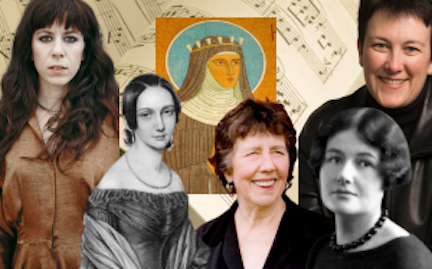

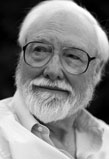










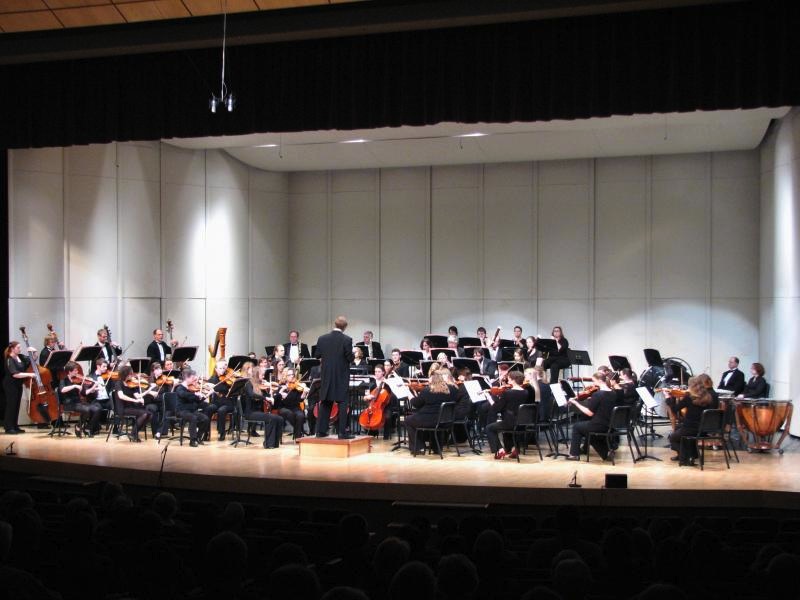





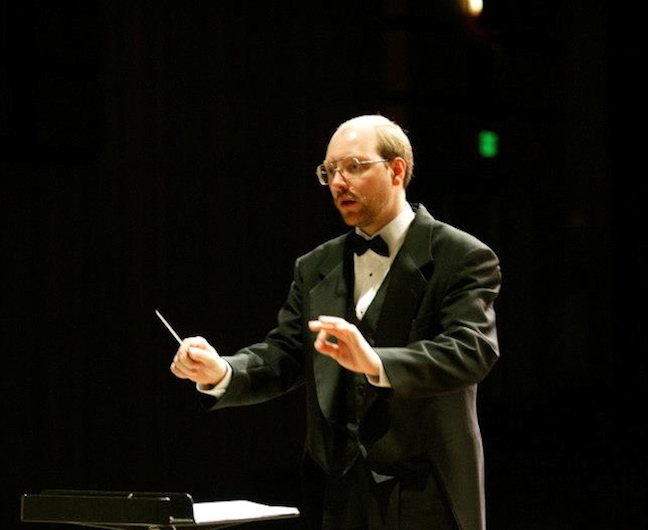


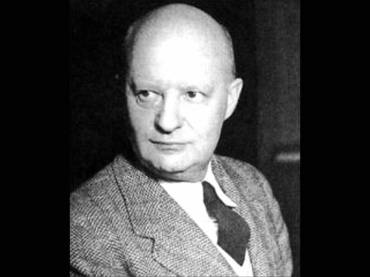


Classical music: The gala opening this weekend of the UW-Madison’s new Hamel Music Center is SOLD OUT. What do you think of the building, the music and the event? Plus, veteran music critic John W. Barker has died
7 Comments
PLEASE HELP THE EAR. IF YOU LIKE A CERTAIN BLOG POST, PLEASE SPREAD THE WORD. FORWARD A LINK TO IT OR, SHARE IT or TAG IT (not just “Like” it) ON FACEBOOK. Performers can use the extra exposure to draw potential audience members to an event. And you might even attract new readers and subscribers to the blog.
ALERT: Word arrived late last night that the respected longtime music critic John W. Barker, a retired UW-Madison professor of medieval history, died Thursday morning. He wrote locally for Isthmus, The Capital Times and this blog. Details will be shared when they are known.
By Jacob Stockinger
This weekend, Oct. 25-27, marks the official gala opening of the new Hamel Music Center (below, in a photo by Bryce Richter for University Communications) at the University of Wisconsin-Madison Mead Witter School of Music. It is located at 740 University Ave., next to the new wing of the Chazen Museum of Art, which has a special exhibit relating to the new music center.
The impressive $58-million structure, which has taken many years to fund (completely privately) and then to build, will celebrate its opening tonight, Saturday night (while the 14th annual Halloween FreakFest on State Street is happening) and Sunday afternoon.
The performers will include distinguished alumni, faculty members and students.
Here is a link to an overall schedule as published on the School of Music’s home website: https://www.music.wisc.edu/hamel-music-center-opening-schedule/
Thanks to an astute reader who found what The Ear couldn’t find, here is a complete schedule — long, varied and impressive — of works and performers: https://www.music.wisc.edu/wp-content/uploads/2019/10/20191025-Hamel-Music-Center-Opening-Weekend.pdf
And here is a link to the official UW-Madison press release with more background and details about the building: https://news.wisc.edu/mead-witter-school-of-musics-hamel-music-center-opening-this-fall/
UW-Madison composer Laura Schwendinger (below) has been commissioned to write a Fanfare that will receive its world premiere tonight.
The opening promises to be a success, complete with receptions at the end of each performance.
In fact, the public has signed on enough that the FREE tickets to all events are SOLD OUT, according to the School of Music’s home website.
Taste is personal and varies, and The Ear has heard mixed reviews of the new building. (For the special occasion, you can hear “The Consecration of the House” Overture by Beethoven, performed by the La Scala opera house orchestra in Milan under Riccardo Muti, in the YouTube video at the bottom.)
Basically, people seem to agree that the acoustics are much improved over Mills Hall and Morphy Recital Hall in the old Humanities Building.
But public opinion seems more divided over other aspects, from the overall external architecture and interior design to the smaller size of the big hall, the seats and seating layout, and the restrooms.
So if you go – or have already gone – let the rest of us know what you think about those various aspects of the new building and about the various performers and programs.
As a warm-up preview, here are photos of the main halls or spaces, all taken by Bryce Richter for University Communications:
Here is the 660-seat Mead Witter Concert Hall:
Here is the 300-seat Collins Recital Hall:
And here is the Lee/Kaufman Rehearsal Hall:
But what do you say? You be the critic.
The Ear and others hope to see COMMENTS from listeners and especially performers. What is it like to perform there? Or to sit and listen?
What does the public think of the new building and concert halls? Are you satisfied? What do you like and what don’t you like?
Should some things have been done – or not done – in your opinion?
Does the building and do the concert halls live up to the expectations and hype?
The Ear wants to hear.
Share this:
Tags: #AaronCopland, #AnthonyDiSanza, #ArpeggioneSonata, #ArthurBenjamin, #AstorPiazzolla, #AugustaReadThomas, #BandMusic, #BeverlyTaylor, #BlogPost, #BlogPosting, #BrassMusic, #BryceRichter, #CapTimes, #ChamberMusic, #ChazenMuseumofArt, #ChenYi, #ChoralFantasy, #ChoralMusic, #ChristopherTaylor, #ClassicalGuitar, #ClaudeDebussy, #CollinsRecitalHall, #CommissionedMusic, #ConcertChoir, #ConcertHall, #ConsecrationoftheHouse, #CoreyPompey, #EmeritusProfessor, #EuphoniumMusic, #FacebookPost, #FacebookPosting, #FluteMusic, #FranzSchubert, #Fridaynight, #GuitarMusic, #HalloweenFreakfest, #HamelMusicCenter, #HomeWebsite, #HumanitiesBuilding, #InteriorDesign, #IsthmusMagazine, #IsthmusNewspaper, #JamesSmith, #JohannSebastianBach, #JohnAdams, #JohnCage, #JohnW.Barker, #KarlheinzStockhausen, #KarlosMoser, #LaScala, #LauraSchwendinger, #Lee/KaufmanRehearsalHall, #LudwigVanBeethoven, #MarcFink, #MarcVallon, #MarkHetzler, #MeadWitterFoundationConcertHall, #MeadWitterSchoolofMusic, #MedievalHistory, #MillsHall, #MorphyRecitalHall, #MusicCommission, #MusicCritic, #Musicfaculty, #NewMusic, #OldBuilding, #OperaHouse, #OperaMusic, #OrchestralMusic, #OriolSans, #ParryKarp, #PaulCollins, #PersonalTaste, #PianoMusic, #PressRelease, #ProfessorEmeritus, #PublicOpinion, #RebecccaBlank, #RiccardoMuti, #RichardLottridge, #RichardStrauss, #SaturdayNight, #SergeiRachmaninoff, #SergeiRachmaninov, #SoldOut, #SopranoSinger, #StateStreet, #StephenSondheim, #Sundayafternoon, #SusanC.Cook, #TenorSinger, #TheCapitalTimes, #TheEar, #TimothyHagen, #TomCurry, #TraditionalMusic, #TyroneGreive, #TyroneGrieve, #UniversityCommunications, #UniversityofWisconsin-Madison, #UW-MadisonSymphonyOrchestra, #UWChorale, #UWSymphonyOrchestra, #VincenzoBellini, #ViolaMusic, #ViolinMusic, #VocalMusic, #WindEnsemble, #WolfgangAmadeusMozart, #WorldPremiere, #YouTubevideo, Aaron Copland, acoustics, afternoon, alumni, Anthony DiSanza, architecture, Argentina, Arpeggione sonata, Art, Arthur Benjamin, artistic, Arts, audience, Augusta Read Thomas, Ástor Piazzolla, Bach, background, band music, Bassoon, Beethoven, Bellini, Beverly Taylor, blog, blue, brass, Brazil, Brazilian music, Bryce Richter, build, building, Campus, Cap Times, celebrate, Cello, Chamber music, chancellor, Chazen, Chazen Museum of Art, Chen Yi, Choir, choral, Choral Fantasy, choral music, Chorale, Christopher Taylor, clarinet, Classical music, classicalmusic, Claude Debussy, collage, Collins Recital Hall, comments, commission, commissioned music, communication, composer, Concert, Concert Choir, concert hall, conductor, consecration, Consecration of the House, Corey Pompey, critic, death, Debussy, design, details, die, died, director, distinguished, do, done, donor, ensemble, Euphonium, event, exhibit, expectations, external, Facebook, faculty, Fanfare, fantasy, fest, flute, folk song, folksong, forward, frak, Franz Schubert, freak, Freakfest, free, Friday night, fund, gala, graduates, guitar, Halloween, Halloween Freakest, Hamel Music Center, History, Holiday, home website, Horn, House, humanities, humanities building, hype, impressive, improved, information, interior, interior design, Isthmus, Italian, Italy, Jacob Stockinger, James Smith, Jazz, Johann Sebastian Bach, John Adams, John Cage, John W. Barker, Karlheinz Stockhausen, Karlos Moser, La Scala, Laura Schwendinger, Lee/Kaufman Rehearsal Hall, link, listeners, live, Ludwig van Beethoven, Madison, madrigal, major, Marc Fink, Marc Vallon, Mark Hetzler, Mead Witter Foundation Concert Hall, Mead Witter School of Music, Medieval, Milan, Mills Hall, mixed, mixed reviews, Morphy Recital Hall, Mosse Humanities Building, Mozart, Music, music critic, music faculty, new, New Music, news, Oboe, occasion, Octet, offically, old, old building, opening, opera, Opera house, opinion, Orchestra, orchestral music, Oriol Sans, Overture, Parry Karp, Paul Collins, performer, performers, photo, photograph, photographer, Piano, pieces, post, posting, press, press release, preview, private, private schools, program, public opinion, publicity, Rachmaninoff, Rachmaninov, reader, Rebecca Blank, reception, rehearsal, restroom, review, Riccardo Muti, Richard Lottridge, Richard Strauss, satisfaction, satisfied, Saturday night, say, schedule, Schubert, seat, seating, Serenade, share, social, sold-out, something, Sonata, soprano, space, special, State Street, Stephen Sondheim, Strauss, structure, Student, subscriber, success, Sunday, Sunday afternoon, Susan C. Cook, symphony, tag, tango, taste, tenor, The Capital Times, The Ear, think, Thursday, ticket, time, Timothy Hagen, Tom Curry, tonight, traditional, Trombone, Trumpet, Tuba, Tyrone Greive, Tyrone Grieve, United States, University Communications, University of Wisconsin-Madison School of Music, University of Wisconsin–Madison, UW Concert Choir, UW Symphony Orchestra, UW Wind Ensemble, UW-Madison, UW-Madison Symphony Orchestra, vary, Veteran, Vincenzo Bellini, Viola, Violin, vocal music, warm up, weekend, wind ensemble, wind music, winds, wing, Wisconsin, Wolfgang Amadeus Mozart, word, world, world premiere, years, you, YouTube